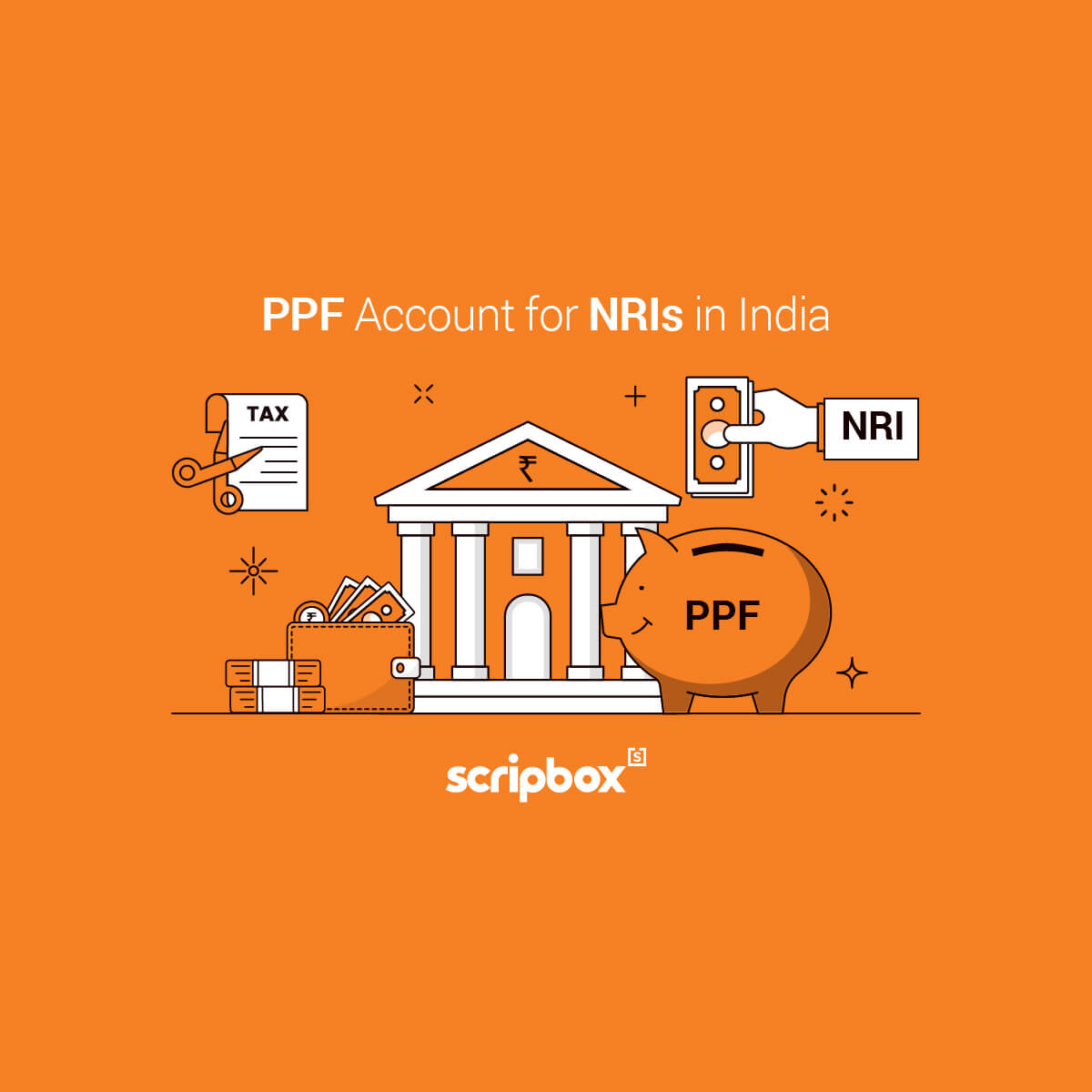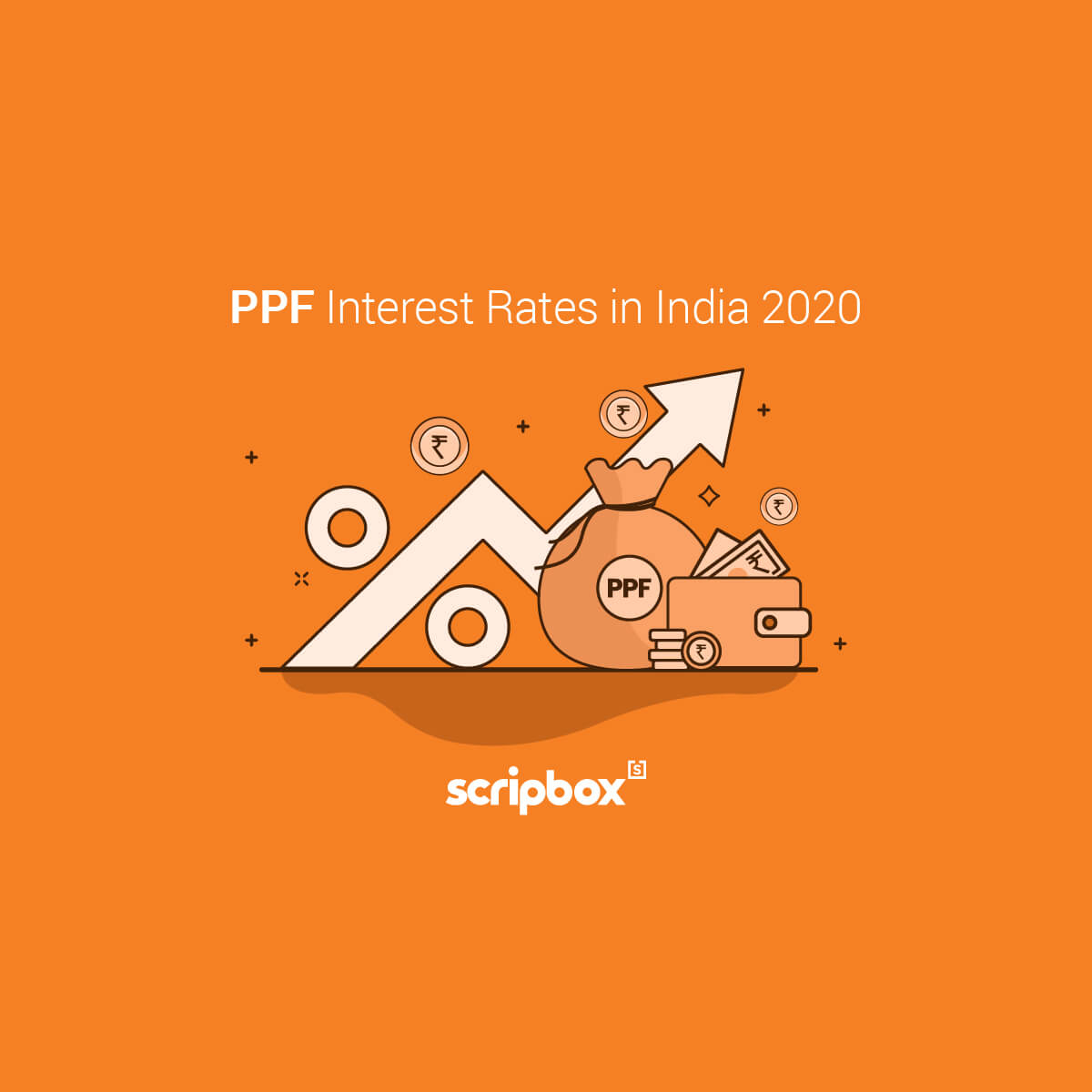Current PPF Interest Rate 2023-24
The current PPF account interest rate remains unchanged by the Ministry of Finance for the current quarter 2023-24 is 7.10% p.a. as of July 2025. The public provident fund interest is calculated every month on the lowest balance at the credit of the account balance between the close of the fifth day and the last day of every month.
The interest is calculated every month but is credited to the investor’s account at the end of the year. Ideally, the investor should invest a fixed amount of sum every month before the 5th to fetch the interest for the entire month. In this way, the investor can gain maximum return on the same.
PPF Interest Rate History July 2025
The following table lists the year wise PPF interest rate:
| Year | Interest Rate (p.a.) |
| 1st Apr 2020 to July 2025 | 7.10% p.a. |
| 1st July 2019 to 31st March 2020 | 7.90% |
| 1st Oct 2018 to 30th Jun 2019 | 8% |
| 1st Jan 2018 to 30th Sept 2018 | 7.60% |
| 1st July 2017 to 30th Sept 2017 | 7.80% |
| 1st Apr 2017 to 30th June 2017 | 7.90% |
| 1st Oct 2016 to 31st March 2017 | 8% |
| 1st Apr 2016 to 30th Sept 2016 | 8.10% |
| 1st Apr 2014 to 31st March 2016 | 8.70% |
| 1st Apr 2013 to 31st March 2014 | 8.70% |
| 1st Apr 2012 to 31st March 2013 | 8.80% |
| 1st Dec 2011 to 31st March 2012 | 8.60% |
| 1st Apr 2011 to 30th Nov 2011 | 8% |
| 1st March 2003 to 31st March 2011 | 8% |
| 1st Apr 2002 to 28th Feb 2003 | 9% |
| 1st March 2002 to 31st March 2002 | 9% |
| 1st March 2001 to 28th Feb 2002 | 9.50% |
| 15th Jan 2000 to 28th Feb 2001 | 11% |
| 1st Apr 1999 to 14th Jan 2000 | 12% |
| FY 1988 – 89 | 12% |
| FY 1987 – 88 | 12% |
| FY 1986 – 87 | 10% |
| FY 1985 – 86 | 9.50% |
| FY 1984 – 85 | 9% |
| FY 1983 – 84 | 8.50% |
| FY 1982 – 83 | 8.50% |
| FY 1981 – 82 | 8% |
| FY 1980 – 81 | 7.50% |
| FY 1979 – 80 | 7.50% |
| FY 1978 – 79 | 7.50% |
| FY 1977 – 78 | 7% |
| FY 1976 – 77 | 7% |
| FY 1975 – 76 | 7% |
| FY 1974 – 75 | 5.80% |
| FY 1973 – 74 | 5.30% |
| FY 1972 – 73 | 5% |
| FY 1971 – 72 | 5% |
| FY 1970 – 71 | 5% |
| FY 1969 – 70 | 4.80% |
| FY 1968 – 69 | 4.80% |
What is Public Provident Fund (PPF)?
The Public Provident Fund scheme is a savings-cum-tax-saving instrument. It was introduced in the year 1968 by the National Savings Institute of the Ministry of Finance. The aim of this small savings scheme is to mobilize small savings among the investors. In other words, Public Provident Fund scheme is an investment with reasonable returns combined with income tax benefits
Besides offering safety and returns, investing in a PPF scheme also offers tax benefits up to 1.5L under section 80C of the Income Tax Act. In other words, investors can use the PPF scheme as a tool to maintain a corpus for their retirement by putting a fixed amount regularly. PPF has a lock-in period of 15 years and can be extended in a block of 5 years. Post this lock-in period of 15 years the PPF maturity amount can be withdrawn.
How is the PPF Rate of Interest Calculated?
As per the PPF rules, PPF interest rate calculation is on a monthly basis on the PPF balance in the investor’s account but is credited only at the end of the financial year on March 31st.
Monthly Payment and Interest Calculation
For instance Amit is investing in his PPF account. Assuming the PPF interest rate to be 7.10% p. a. Know how the interest calculation will be made with below example.
| Investment Date | Monthly Contribution | Closing Balance | Total Contribution | Interest Earned |
| 02-09-2022 | 10,000 | 10,000 | 10,000 | Rs. 59.17 |
| 02-10-2022 | 10,000 | 20,000 | 20,000 | Rs. 118.33 |
| 02-11-2022 | 10,000 | 30,000 | 20,000 | Rs. 118.33 |
| 02-12-2022 | 10,000 | 40,000 | 30,000 | Rs. 177.5 |
| 02-01-2023 | 10,000 | 50,000 | 50,000 | Rs. 295.83 |
| 02-02-2023 | 10,000 | 60,000 | 60,000 | Rs. 355 |
| 02-03-2023 | 10,000 | 70,000 | 70,000 | Rs. 414.17 |
| 02-04-2023 | 10,000 | 80,000 | 80,000 | Rs. 473.33 |
| 02-05-2023 | 10,000 | 90,000 | 90,000 | Rs. 532.5 |
| 02-06-2023 | 10,000 | 100,000 | 100,000 | Rs. 591.67 |
| 02-07-2023 | 10,000 | 110,000 | 110,000 | Rs. 650.83 |
| 02-08-2023 | 10,000 | 120,000 | 120,000 | Rs. 710 |
Lump Sum Payments and Interest Calculation
For instance Amit is investing as a lump-sum amount in the month of April itself. The below table is the interest rate calculation method in such a case:
| Investment Date | 2nd Feb 2022 |
| PPF Contribution | Rs. 150,000/- |
| Interest Rate | 7.10% |
| Interest Earned | Rs. 10,650/- |
What are the Tax Saving Benefits of PPF?
PPF savings scheme operates on an Exempt-Exempt-Exempt (EEE) model wherein all the investments made towards PPF are deductible under section 80C of the Income Tax Act. You can claim the deductions while filing your income tax return.
The withdrawal made from the account at the time of closure of PPF account is also exempt along with the accumulated interest. You can use Scripbox’s income tax calculator to calculate the taxable income and tax payable.
The investors cannot withdraw the amount from PPF before the completion of the lock-in period of 15 years. The entire PPF maturity amount belongs to the account holder for life and is payable to the nominee(s) of the person after his/ her death.
Does the PPF Account Earn Interest After Maturity
PPF accounts have a mandatory lock-in period of 15 years from the account opening date. Upon maturity, investors have the following two options:
- Withdraw the entire accumulated corpus in their PPF account.
- Extend the PPF account for an additional 5 years. For this, you need to continue your contributions and interest accrual on the total PPF balance.
You need to extend your PPF investments within 1 year after the account matures. All PPF renewals are for a block of 5 years.
If no action is taken within 1 year of maturity, the account is automatically extended, earning interest. However, in such scenarios, no further contributions can be made during this period.
PPF Interest Rate Comparison with Other Investment Options
The following table compares PPF with other post office saving schemes:
| Scheme Name | Interest Rate | Lock-in Period |
| Public Provident Fund | 7.10% p.a. | 15 years |
| National Saving Certificate (NSC) | 7.70% p.a. | 5 years |
| Tax Saver Fixed Deposit | 6.5% | 5 years |
| Sukanya Samriddhi Yojana | 8.20% p.a. | 21 years or upon the marriage of the girl child, whichever is earlier |
| 5 Year Post Office Time Deposit Account | 6.90% to 7.50% p.a. | 5 years |
PPF vs Post Office Time Deposit Interest Rate in 2025
The table illustrates the difference between PPF and fixed deposit.
| Particulars | PPF | Post Office Time Deposit |
| Interest Rate | 7.10% p.a. | 6.90% to 7.50% p.a. |
| Tenure | 15 year | 5 Year |
| Lock in | 15 Year | 1 Year to 5 Year |
| Premature Withdrawal | Partial Withdrawal (After 5th Year) | Yes (Interest Penalty Applicable) |
RELATED READS
Frequently Asked Questions
You can open a PPF account at all designated branches of public sector banks and private sector banks. Furthermore, you can open a PPF account at the nearest post office. Fill out the application form, and submit it along with the required documents and deposit amount.
To open a PPF account, you need to submit documents like PAN Card, Aadhar Card, etc. The details are mentioned below:
Identity Proof- Voter ID, PAN Card, Aadhar Card
Proof of Residence
Passport size photograph
Nomination Form
Checking your PPF account balance can be done both online and offline. PPF account balances can be checked online only for those investors whose PPF accounts are held with the bank. All you need is for your internet banking to be activated, and you can check the status and balance your PPF account at any time.
To check the balance offline, you need to visit the bank branch and get the PPF passbook updated. The passbook contains, date-wise, details of the investments made, interest credited, and the balance in your account.
Above all, to make the customer experience easy, many banks have started to provide kiosks in their branches or ATMs wherein you can update your passbook at your convenience.
The interest on PPF is calculated monthly, compounded annually and credited at the end of every financial year, 31st March.
PPF interest is announced every quarter by the Finance Ministry. Thus, PPF interest can change every quarter.
Related Articles
- Current PPF Interest Rate 2023-24
- PPF Interest Rate History July 2025
- What is Public Provident Fund (PPF)?
- How is the PPF Rate of Interest Calculated?
- What are the Tax Saving Benefits of PPF?
- Does the PPF Account Earn Interest After Maturity
- PPF Interest Rate Comparison with Other Investment Options
- PPF vs Post Office Time Deposit Interest Rate in 2025
- Frequently Asked Questions
- Confused if your portfolio is performing right enough to meet your goals?
- How long have you been investing in mutual funds?
- What is your current portfolio size?
- What is your approximate annual household income?
- Your profile does not qualify for a call with a Financial Expert.




























Show comments